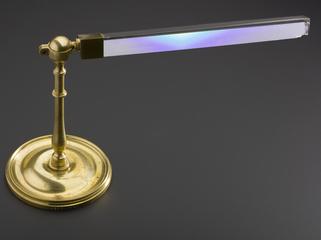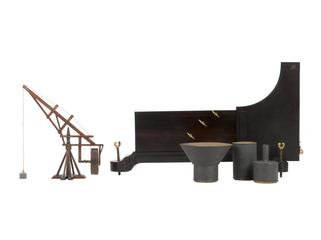
Mercury-In-Glass Thermometer, 1761
- maker:
- George Adams






Mercury-in-glass thermometer in box, 1761.
This mercury-in-glass thermometer was used in the demonstration in which sal ammoniac (ammonium chloride) was dropped in dilute sulphuric acid. The whole apparatus was in a receiver on the air pump (1927-1624) with the air removed. This thermometer showed that the temperature of the 'Efervescence' given off during the reaction was lower than that of the surroundings. The thermometer is graduated from -20 to 210 Fahrenheit. The instrument was made by George Adams, instrument maker to the King George III.
The door of the box contains a list of temperatures from different experiments in various locations in Stephen Demainbray's handwriting.
Details
- Category:
- King George III
- Object Number:
- 1927-1811
- Measurements:
-
overall thermometer (1 of 2): 265 mm x 75 mm x 75 mm, .2 kg
overall box (2 of 2): 282 mm x 93 mm x 95 mm,
- type:
- thermometers
- copyright:
- Unlinked Name
- credit:
- King's College, London




